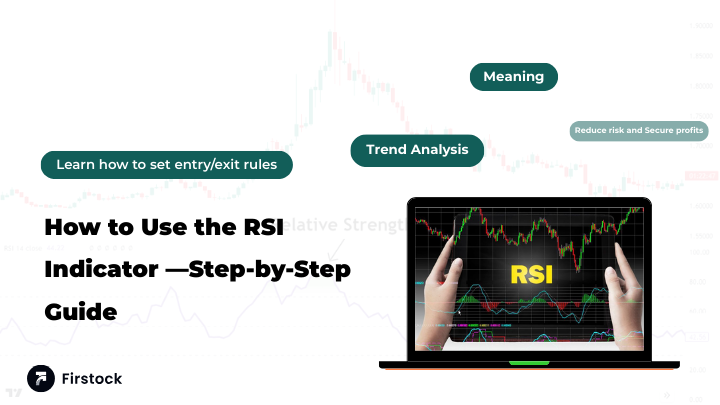Difference Between NSDL and CDSL Explained for Investors

Difference Between NSDL and CDSL: A Beginner-Friendly Guide
The fact that the Indian stock market is already daunting to first time investors, and the terms NSDL and CDSL come up. In case you are asking yourself what is NSDL and CDSL, why it is relevant, and what is the difference between the two, you are not alone. Even ordinary investors are lost.
Imagine NSDL and CDSL to be two huge digital strong rooms where your stock is kept securely. Similar to how you have decided on a bank to hold your money in, the stock market is providing NSDL and CDSL to protect your stocks and securities.
Through this informative, friendly, and simplified guide, you will discover just what NSDL and CDSL are, what they are called entirely, how they operate, and the actual distinction between NSDL and CDSL, without being overloaded with jargon of technical language.
Let’s begin!
Disclaimer: This post is for informational purposes only and does not constitute investment advice. Please consult with a financial advisor before making any investment decisions.
Introduction: Why Depositories Matter
A depository is like a digital bank for shares. Instead of receiving physical share certificates, all your investments are stored electronically in a Demat account. This ensures safety, easy access, faster settlement, and zero paperwork.
In India, two major depositories—NSDL and CDSL—handle this job. They act as the backbone of India’s entire stock market ecosystem.
What is NSDL?
NSDL (National Securities Depository Limited) is India’s first and one of the largest depositories. Established in 1996, NSDL played a major role in shifting India from paper-based certificates to a fully digital stock market.
NSDL mainly caters to institutional investors, large brokers, and major financial institutions.
NSDL Full Form Explained
The NSDL full form is National Securities Depository Limited.
It is promoted primarily by the National Stock Exchange (NSE), along with major banks and financial institutions.
What is CDSL?
CDSL (Central Depository Services Limited) is India’s second depository, founded in 1999. Over time, CDSL has grown rapidly and is now extremely popular among retail traders and modern brokers.
It is simple, user-friendly, and technologically efficient—making it a favorite for new-age investors.
CDSL Full Form Explained
The CDSL full form is Central Depository Services Limited.
It is promoted mainly by the Bombay Stock Exchange (BSE) and several leading banks.
Why Are NSDL and CDSL Important?
These two depositories are essential because they:
- Prevent fraud and duplication
- Eliminate the need for physical certificates
- Enable quick share transfers
- Maintain accurate investor records
- Ensure safe and regulated storage of securities
Without NSDL and CDSL, investing today would be slow, risky, and extremely complicated.
How NSDL and CDSL Work (Simple Explanation)
Here’s a simple metaphor:
Imagine you shop online.
- The website is your broker.
- The warehouse storing your product is the depository.
- Your delivery address is your Demat account.
So, when you buy shares:
- Your broker facilitates the transaction.
- NSDL or CDSL stores your shares securely.
- Your Demat number identifies your holdings.
Everything happens digitally, seamlessly, and securely.
Role of Depository Participants (DPs)
You don’t directly interact with NSDL or CDSL. Instead, you connect through Depository Participants (DPs)—mostly brokers or banks.
DPs open your Demat account, handle transactions, and provide access to your holdings.
Modern stock trading apps like Firstock also serve as DPs. They offer trading platforms along with Demat services linked to either NSDL or CDSL, depending on their setup.
NSDL vs CDSL: Key Differences
Here’s the most important section—the difference between NSDL and CDSL in a clear and simple format:
1. Full Form
- NSDL: National Securities Depository Limited
- CDSL: Central Depository Services Limited
2. Year of Establishment
- NSDL – 1996
- CDSL – 1999
3. Promoted By
- NSDL – NSE
- CDSL – BSE
4. DP ID Format
- NSDL Demat number starts with IN
- CDSL Demat number is 16 digits numeric
5. Target Audience
- NSDL – Large institutions, banks
- CDSL – Retail customers and discount brokers
6. Technology
- NSDL – Legacy system
- CDSL – Modern, simpler for beginners
7. Alerts & Communication
Both provide SMS, email alerts, and online systems like NSDL SPEED-e and CDSL Easiest.
8. Market Share
- NSDL – Dominant among big financial players
- CDSL – Extremely popular among retail traders
9. Brokers and Depositories
New-age brokers such as Firstock often partner with CDSL due to its ease of integration and cost advantage. This allows brokers to offer seamless onboarding, faster processing, and transparent investing experiences.
Charges Associated With NSDL and CDSL
You don’t pay NSDL or CDSL directly—charges are billed through your broker. These include:
- Demat maintenance
- Debit transaction charges
- Pledge/unpledge fees
CDSL is often slightly more affordable for brokers, which is why many new brokers prefer connecting with it.
How Brokers Choose a Depository (With Example of Firstock)
Your broker decides whether your Demat account is with NSDL or CDSL.
For example, Firstock - Option Trading App, a newer and fast-growing stockbroker, has built a reputation for offering simple, cost-effective, and technology-driven trading experiences. Brokers like Firstock often prefer connecting with CDSL because of:
- Faster digital processes
- Simpler retail-friendly systems
- Efficient APIs
- Cost advantages
- Smooth onboarding for new investors
This ultimately benefits users with quick KYC approvals, seamless transactions, and better customer experiences.
Investor Protection Measures
Both NSDL and CDSL offer strong security features:
- OTP and PIN-based authentication
- SMS/email alerts for every transaction
- Account freezing options
- SEBI-regulated compliance
- Secure corporate action updates
Your investments remain equally safe in either depository.
How to Know if Your Demat is NSDL or CDSL
Check your Demat account number:
NSDL
Starts with IN (Example: IN3024XXXXXXXX)
CDSL
Contains 16 digits only (Example: 1208120009876543)
You can also check via your broker’s mobile app or portal.
Common Misconceptions
Myth 1: One is safer than the other
Truth: Both are equally secure and regulated.
Myth 2: You can choose your depository
Truth: Your broker chooses it.
Myth 3: Shares can disappear
Digital storage ensures permanent, tamper-proof records.
Summary of Difference Between NSDL and CDSL
- NSDL = Backed by NSE | CDSL = Backed by BSE
- NSDL → IN-prefixed Demat | CDSL → 16-digit Demat
- NSDL = older infra | CDSL = modern and retail-friendly
- Both handle share deposits, withdrawals, and corporate actions
- Equally safe and regulated by SEBI
Both are pillars of India’s stock market ecosystem.
Conclusion
Understanding the difference between NSDL and CDSL helps you navigate the stock market with confidence. While both serve the same purpose, their structure and user experience differ slightly. Thankfully, your shares are just as safe in either one.
Most modern brokers—including newer, user-friendly Trading apps like Firstock—are choosing systems that offer smoother digital experiences, especially for retail investors. This ensures faster account opening, easier access, and a more seamless trading journey.
Once you understand how NSDL and CDSL work, the entire Demat system starts to feel much more straightforward.
FAQs
1. What is NSDL and CDSL in simple terms?
They are digital vaults that store your shares safely in electronic form.
2. How do I know whether my Demat account is in NSDL or CDSL?
Check your Demat number:
- Starts with IN → NSDL
- 16 digits → CDSL
3. Are NSDL and CDSL equally safe?
Yes. Both are secure and regulated by SEBI.
4. Do brokers like Firstock use NSDL or CDSL?
Most modern brokers, including Firstock, frequently work with CDSL because it is retail-friendly and supports faster digital processes.
5. Can I switch from NSDL to CDSL or vice versa?
Yes. You can open a new Demat account under the other depository and transfer your holdings.





